By: Geeq on Nov 17, 2022
Geeq is a mult-chain platform:
The Geeq architecture scaling solution is to launch new chains.
Limitless scaling, with the security of settling every transaction directly on-chain.
Each Geeq chain has its own network, every message is coded for efficiency, and every Geeq chain follows the same protocol.
Welcome to the efficient world of applications powered by Geeq.
Geeq Addresses a Major Pain Point in the Blockchain Industry
Blockchain technology has come from a tradition where transactions are settled on a main chain, which is an approach that inevitably leads to difficulties in maintaining security while scaling. Let’s explain the problem from a bird’s eye level.
As long as all blockchain transactions ultimately must be resolved on a main chain, the only option is to introduce mechanisms that operate separately which then must be anchored back into the main chain.
Roll-ups are a category of proposed scaling solutions, which may be suitable for some applications and not others. Roll-ups bundle transactions into a smaller unit that is submitted to the main chain. Another common solution is to form separate blockchains to accept transactions, e.g. layer 2’s, subnets, side chains, etc. Yet another is to bridge disparate blockchain ecosystems.
When any new scaling solution is introduced, new attack surfaces are also introduced. While each solution provides the ability to accept or cross-reference more transactions, they must be vetted for how well they prove they are secure independently, as well as how they affect the “shared security” of their respective ecosystems.
Why is it Crucial to Examine How Blockchains Scale?
At Geeq, we believe:
The primary economic value of a blockchain is to provide a dependable data set that is acceptable to all parties who wish to coordinate on some, but not all, dimensions with each other and do not wish to trust a third party.
In order for users to believe any system with a main chain is dependable, they must believe their transactions were validated properly by the scaling method that is used and their transactions were transmitted through each touchpoint intact, with any and all errors corrected.
To be honest, we don’t think users care what scaling method is used, as long as the final state of their transactions are correctly and reliably validated where they need them. Users care about their own safety and well-being, not about how much effort has gone into developing the technology or even the total value of assets entrusted to that system. The question is, can blockchain technology scale without breaking?
Geeq’s Revolutionary Solution Provides Scalability and Security
The only way users can have absolute certainty is to be provided with unambiguous proof that their transactions have been validated correctly on-chain, without having to take a centralized power’s word for it. This is where Geeq’s technology shines.
Geeq is a multi-chain ecosystem, a “forest of chains” where each chain has its own network of nodes and every chain follows the same rules, set by Geeq’s patented and secure protocol. Every transaction is validated separately and a user can drill down to see a proof for their particular transaction.
Every transaction is validated separately and a user can drill down to see a proof for their particular transaction.
Geeq scales by launching another blockchain, thus different chains in this forest may have different heights. The forest may grow without limit, without spillovers from throughput or cost, and without contagion, because each chain stands on its own.
Thus, applications powered by Geeq never have to worry about connections to a main chain or what is happening on any other chain.
Therefore, every transaction is settled directly on-chain at Geeq.
Geeq’s users do not have to trust – as they would in a complex ecosystem – that layers of safeguards are working in tandem to protect them. This is because Geeq chains are simple and efficient, by design.
Geeq’s Elegant Architecture for dApps
Users of Geeq dApps can send as many transactions as they like. Transactions are sent to a node for any blockchain running a specific dApp. There may be many such Geeq chains.
Each node keeps two blockchains for each dApp. Every block constructed for the validation blockchain will have a corresponding block constructed for the application blockchain.
Here we show the first block at a node after the genesis block: Block 1 at block height 1.
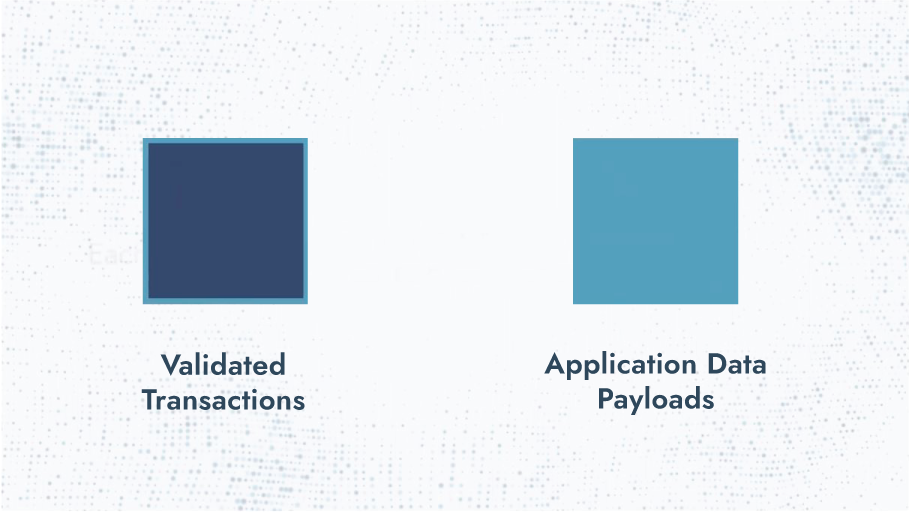
Transactions are validated and written to a validation block, using Geeq’s patented leaderless protocol.

To recap: each transaction sent to a dApp is supported by a pair of Geeq chains and is validated by Geeq’s industry-leading secure protocol, and settled on-chain. No roll-ups, extra layers, or bridges are required.
Building a Geeq dApp: The Example of Geeq Data
When the user sends a dApp transaction to the node, the webapp prompts the user to provide the required information to process that transaction.
For example, Geeq Data requires several elements such as the targeted block, chain, and node. Depending on the webapp developer’s preferences, these may be automatically pre-filled for the user and the developer may choose which types of data to support.
For simplicity, we pre-filled much of the form for the test-net that was released to the community. We chose to support .pdf and .jpg files. The user uploads a hash of their file. They also upload user-provided metadata. We chose to make the first field of metadata required so users could search the block explorer.
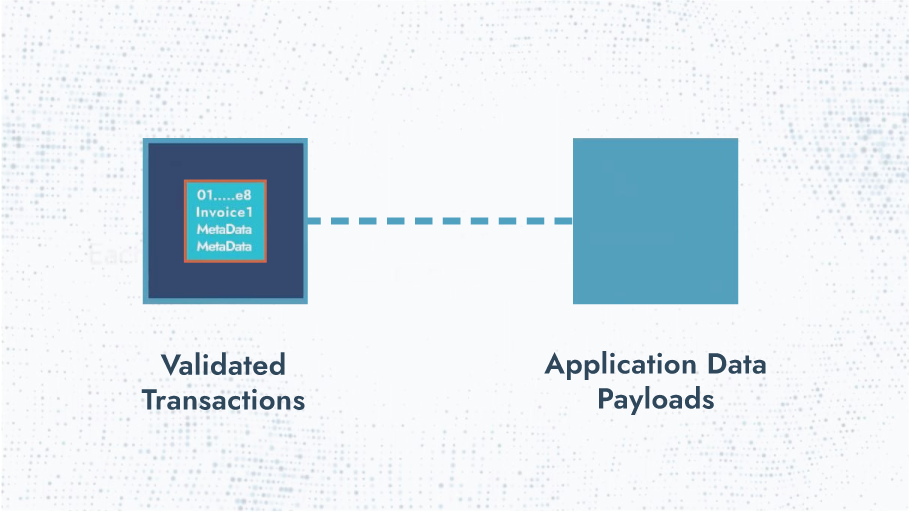
To see the four steps of using this Geeq Data webapp, here is a short video. There are no smart contracts required. All of the blockchain back end is invisible to the user, and the dApp itself may be written in any language that is comfortable for webapp developers.
Parallel Geeq Chains – How They’re Made
Once the transactions are validated for a block, Geeq’s protocol separates each application data payload from the rest of its message
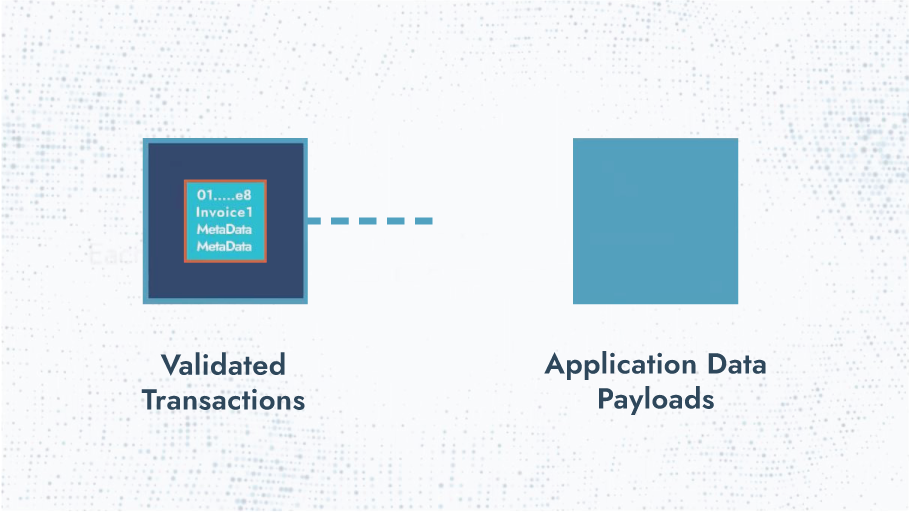
All the data payloads are data for the corresponding application block
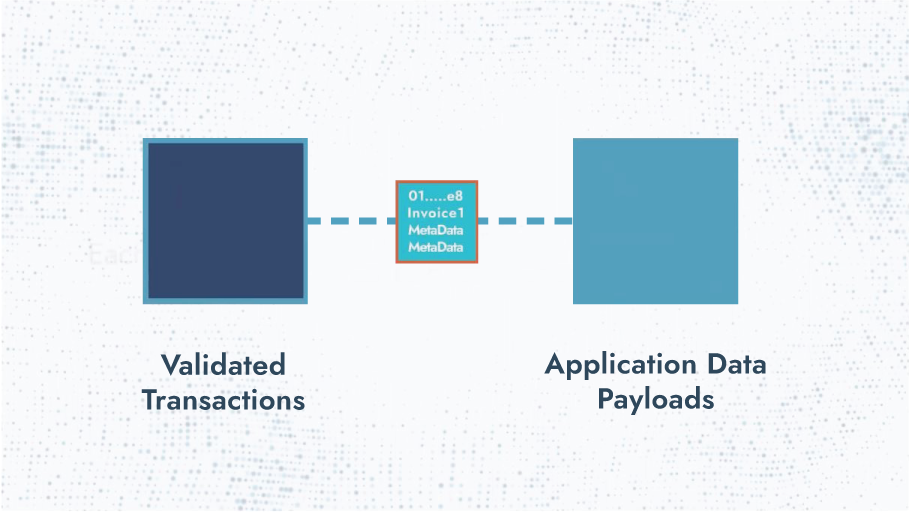
The node then constructs the corresponding application block.
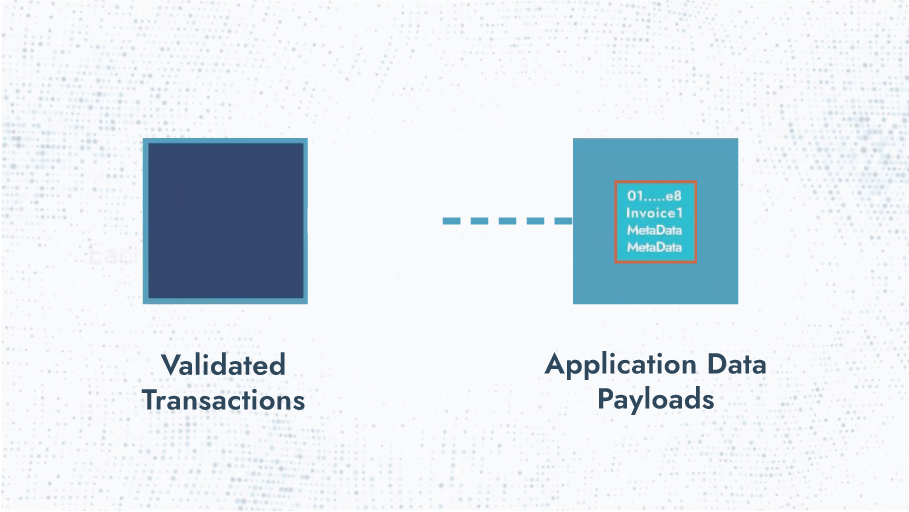
The two Geeq chains that support a dApp are built in parallel.
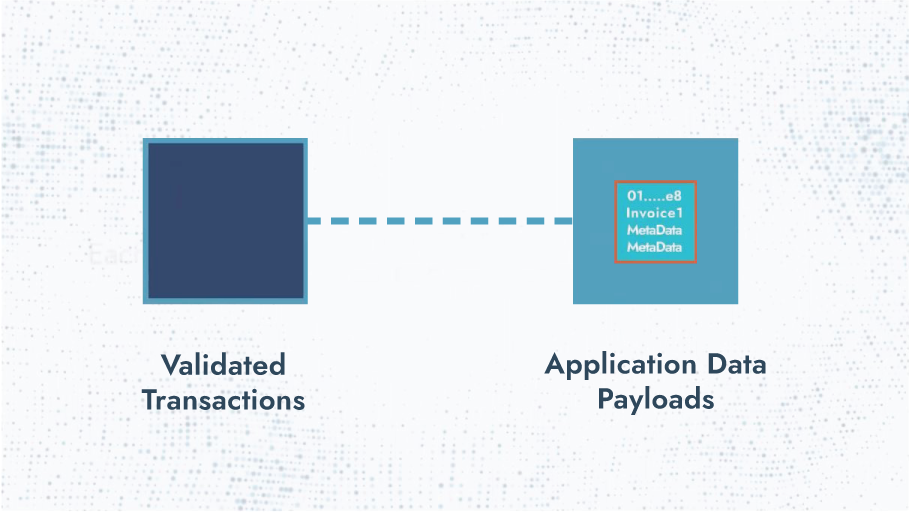
While these blocks are built, the nodes continue to collect other transactions. Once the block is built, the process repeats. Moving on to Block 2!
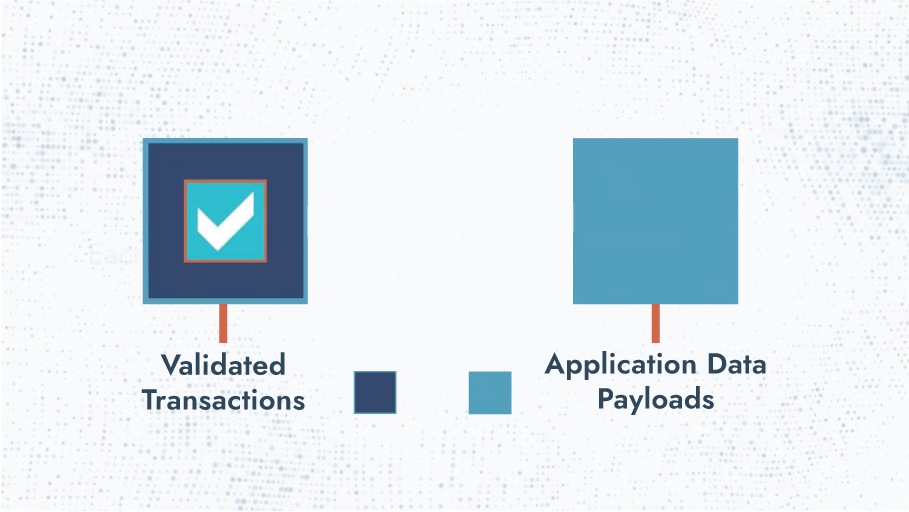
Every Geeq-native dApp is supported this way. This dApp is on its way to growing two trees in Geeq’s forest of chains.

No smart contracts!
No roll-ups!
Nothing complicated!
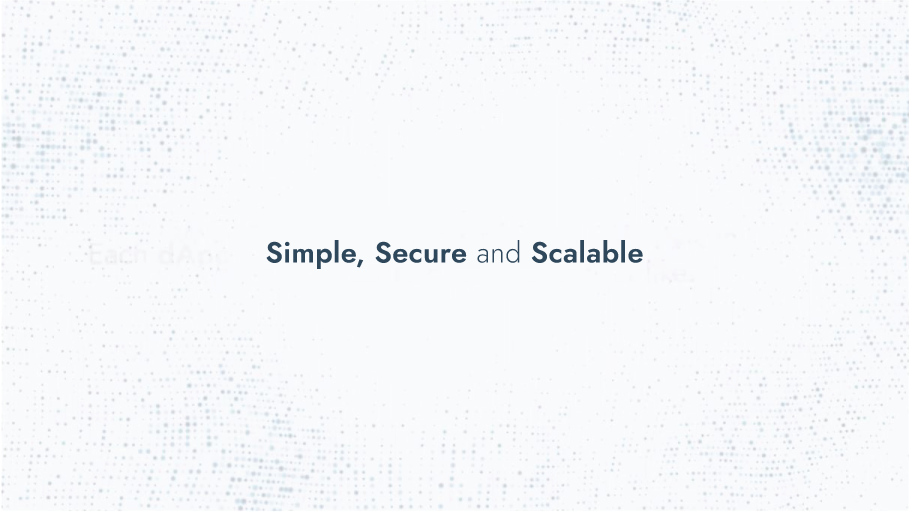
We hope you enjoyed this and would like to learn more.
– The Geeq Team






To learn more about Geeq, follow us and join the conversation.
@GeeqOfficial